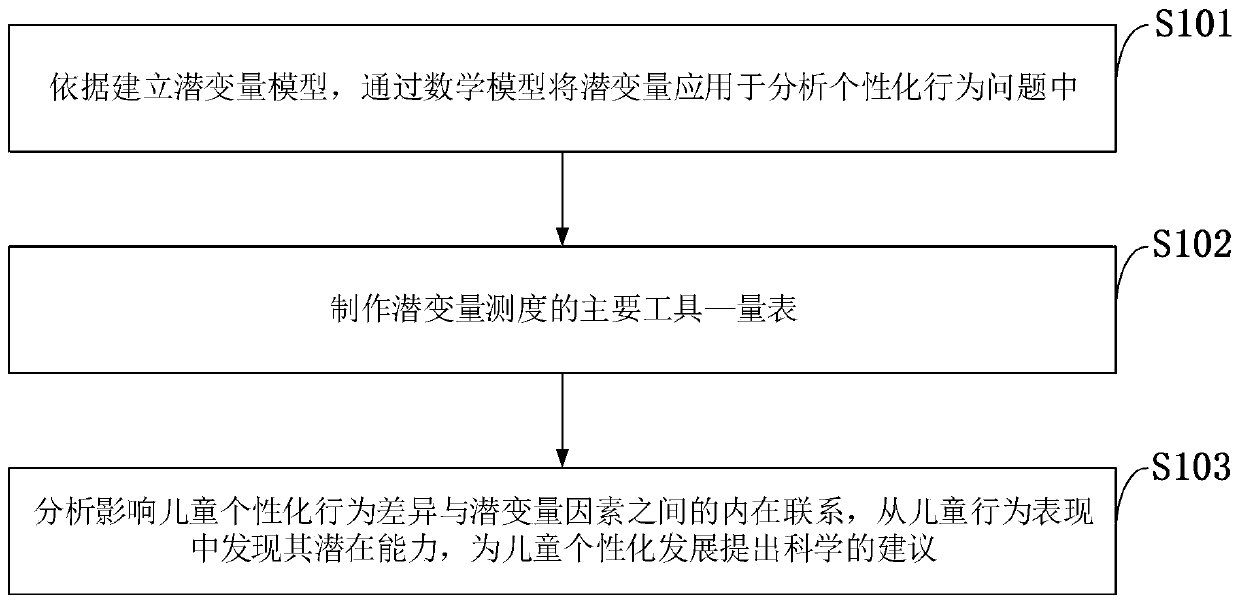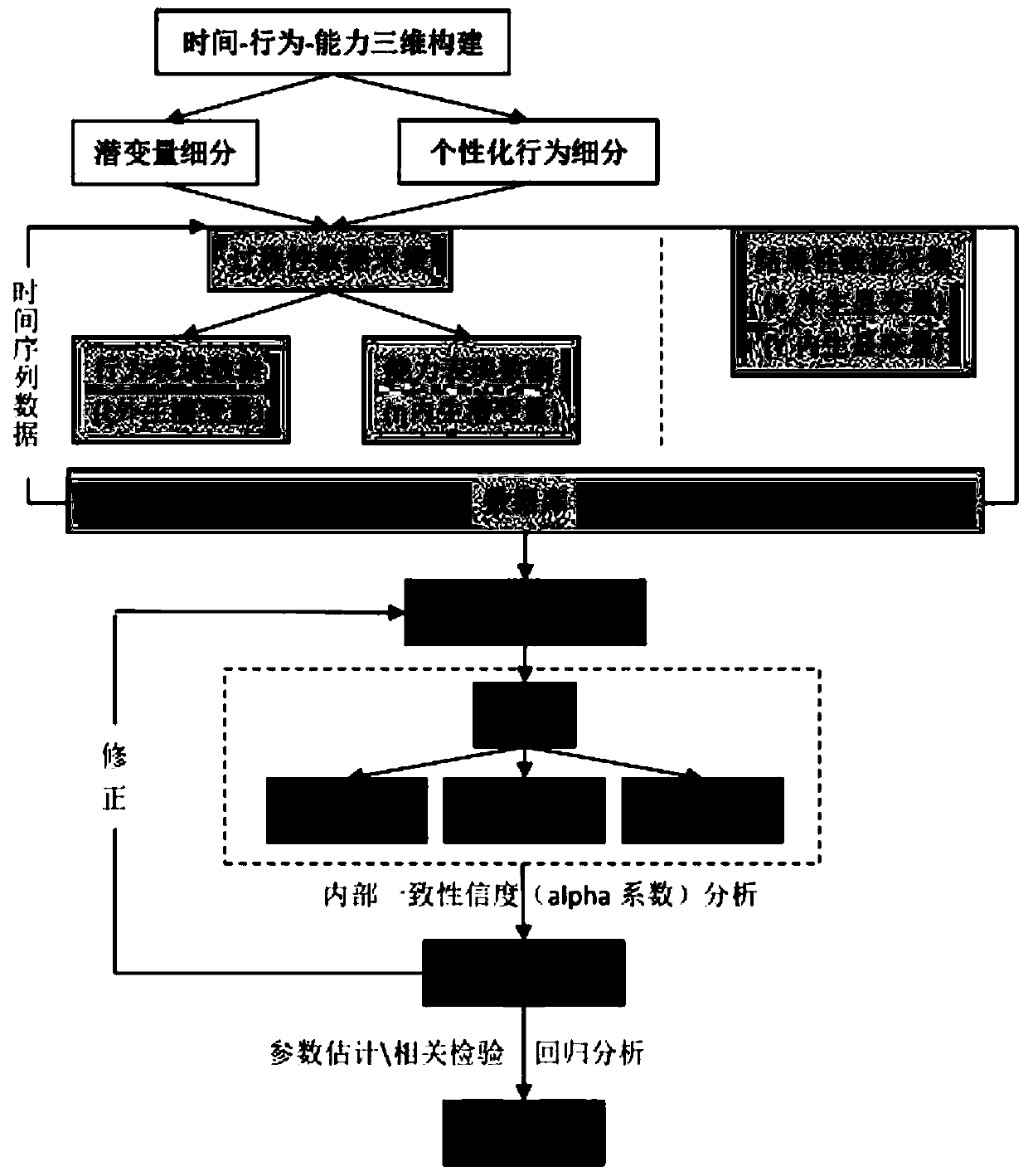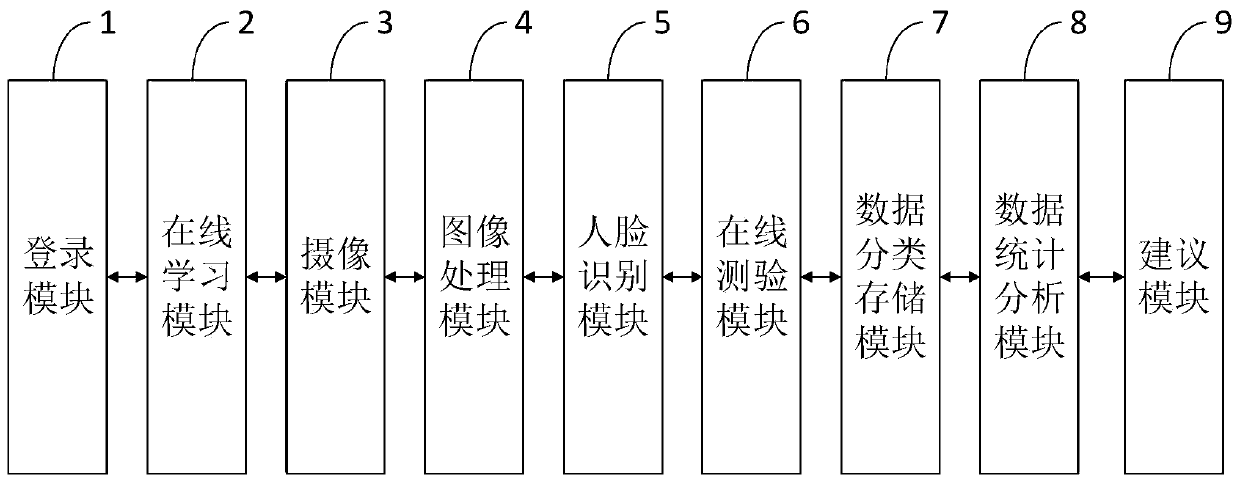Children personalized behavior statistical analysis system and method based on latent variable model
A statistical analysis and latent variable technology, applied in computing, computer parts, character and pattern recognition, etc., can solve the problems of low data fitting accuracy, small sample size, and lack of objectivity of data.
- Summary
- Abstract
- Description
- Claims
- Application Information
AI Technical Summary
Problems solved by technology
Method used
Image
Examples
Embodiment 1
[0092] 1. Constructing a theoretical model of personalized behavior-ability of children aged 0-12 To build an analysis model of children's personalized behavior, it is first necessary to construct a three-dimensional structural diagram of age, behavior, and ability, such as Figure 4 . The second is the crescendo-type category of children's personality behavior and abilities with age.
[0093] 2. The latent variable of individualized behavior of children aged 0-12 is based on the three-dimensional correlation structure of age-behavior-ability, the latent variable of individualized behavior with age, and the logic between latent variables. Latent variables are variables that cannot be directly measured. In the process of children's education and growth, according to the differences in latent variable description objects, latent variables that are commonly used or may be used in personalized behavior are divided into three categories: ability latent variables, personal percepti...
Embodiment 2
[0151] 1. An example of children's face recognition
[0152] This embodiment uses python third-party library sk-learn machine learning+principal component analysis (PCA)+support vector machine (SVM) to realize face recognition.
[0153] First prepare the photos of the children to be trained, and do grayscale processing on the images. Use the Image function to read in the data set, divide the data set, one part is used for the training set train, and the other part is used for the test set test. Using the idea of principal component analysis, select the number of retained principal components n_components, select the "randomized" SVD method, and use the "whiten" method in data preprocessing to obtain the projection coefficients of the training set and the test set. Use the training set to train an SVM classifier for the identification of the test set. Finally, use the trained SVM classifier for face recognition on the test set.
[0154] If it is a student in the class, it ...
PUM
 Login to View More
Login to View More Abstract
Description
Claims
Application Information
 Login to View More
Login to View More - R&D
- Intellectual Property
- Life Sciences
- Materials
- Tech Scout
- Unparalleled Data Quality
- Higher Quality Content
- 60% Fewer Hallucinations
Browse by: Latest US Patents, China's latest patents, Technical Efficacy Thesaurus, Application Domain, Technology Topic, Popular Technical Reports.
© 2025 PatSnap. All rights reserved.Legal|Privacy policy|Modern Slavery Act Transparency Statement|Sitemap|About US| Contact US: help@patsnap.com



